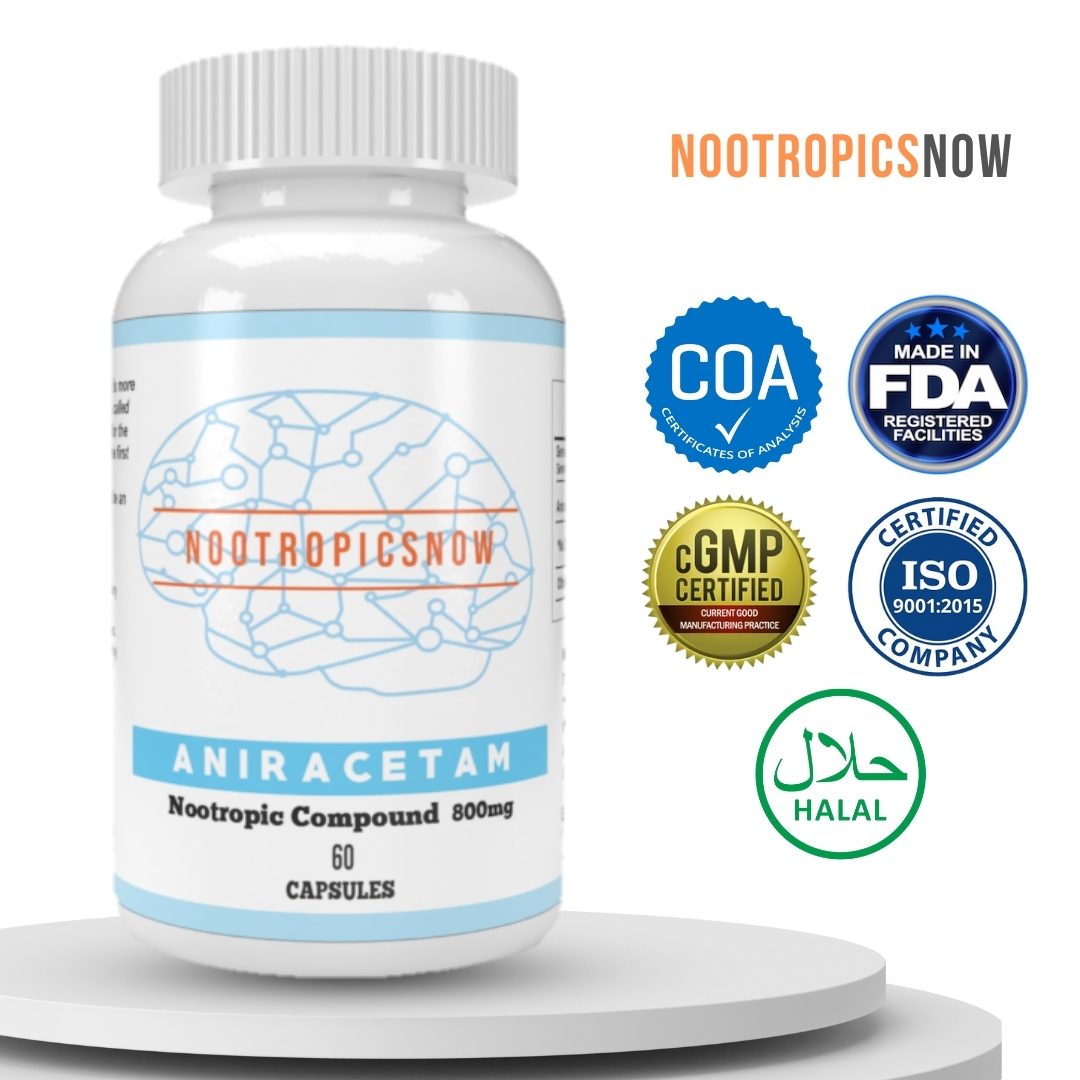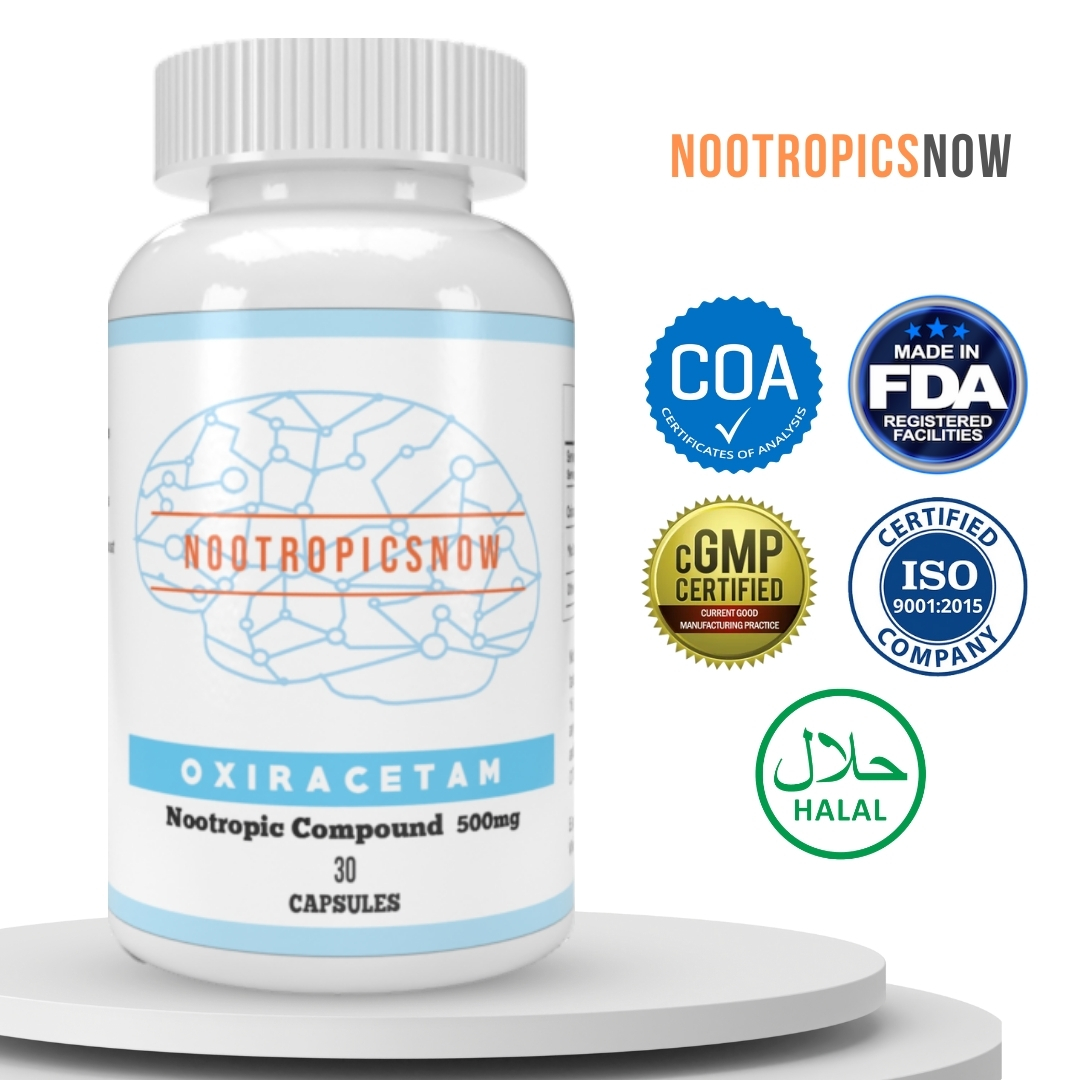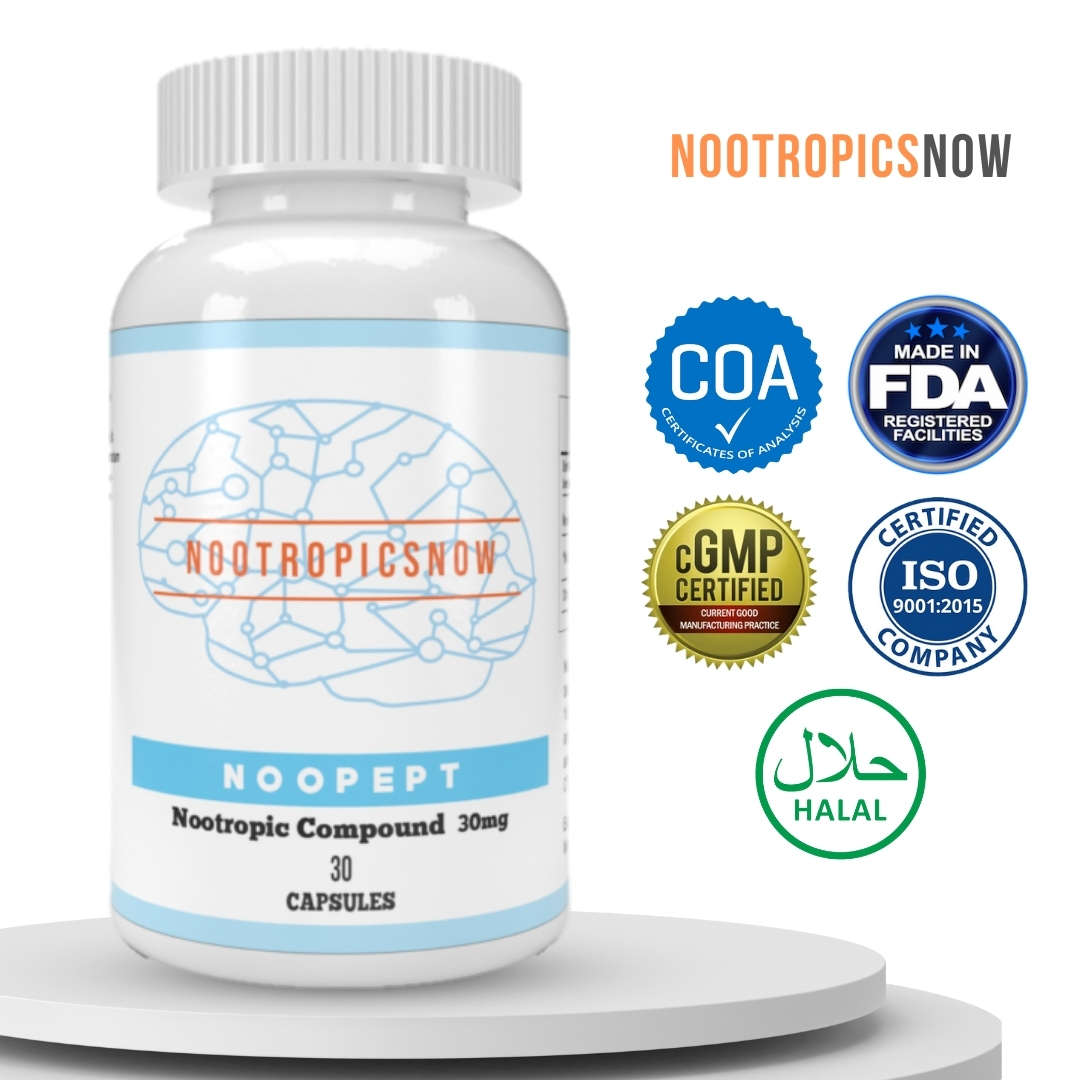Aniracetam Review: Benefits, Dosage & Side Effects

`markdown
Aniracetam Review: Unlocking Cognitive Potential & Weighing the Evidence
Aniracetam is a synthetic nootropic compound belonging to the racetam family. Initially developed in the 1970s by Hoffmann-La Roche, Aniracetam has garnered considerable interest for its potential cognitive-enhancing and anxiolytic properties. However, understanding its mechanism of action, benefits, side effects, and optimal use is crucial before considering it as a cognitive supplement. Moreover, the regulatory landscape surrounding Aniracetam varies across different countries, impacting its accessibility.
Understanding Aniracetam: A Deeper Dive

Aniracetam (N-anisoyl-2-pyrrolidinone) is a fat-soluble derivative of piracetam, the original racetam nootropic. Its structure is similar to other racetams, featuring a pyrrolidone ring. However, the presence of an anisoyl group differentiates it and contributes to its unique pharmacological properties, especially its increased lipophilicity. Consequently, it’s believed to cross the blood-brain barrier more readily than Piracetam. Its rapid absorption and metabolism lead to a relatively short half-life, typically around 1-2.5 hours.
Regulatory Status
The regulatory status of Aniracetam varies significantly worldwide. In some countries, like the United States, it’s available as a dietary supplement and can be purchased without a prescription. However, the FDA doesn’t evaluate its efficacy or safety for cognitive enhancement. In other regions, such as some parts of Europe, Aniracetam might be classified as a prescription drug, requiring a doctor’s authorization for purchase and use. This discrepancy highlights the importance of checking local regulations before acquiring Aniracetam.
Mechanisms of Action: How Aniracetam Works
The exact mechanisms by which Aniracetam exerts its effects are complex and not fully elucidated. However, research suggests that it influences several neurotransmitter systems and neuronal processes:
The combined effects of these mechanisms likely contribute to the cognitive benefits observed with Aniracetam use. However, the specific contribution of each mechanism and their interactions require further research.
Potential Cognitive Benefits: What the Research Says
Research into the cognitive benefits of Aniracetam has yielded mixed results, with some studies showing significant improvements while others report minimal effects. It’s important to consider the context of each study, including the population studied, dosage used, and outcome measures assessed.
It’s important to note that the evidence for these cognitive benefits is not always consistent across studies. Some studies have shown significant improvements, while others have reported minimal or no effects. This variability may be due to differences in study design, dosage used, or individual responses to Aniracetam. Further research is needed to fully understand the cognitive benefits of Aniracetam and to identify the individuals who are most likely to benefit from its use.
Studies Supporting Aniracetam’s Efficacy
Several studies have investigated the effects of Aniracetam on cognitive function and mood. A study published in the European Journal of Pharmacology demonstrated that Aniracetam significantly improved memory and learning in rats with induced cognitive impairment. Furthermore, a human study published in Acta Psychiatrica Scandinavica found that Aniracetam improved cognitive performance and reduced anxiety in elderly patients with mild cognitive impairment. A 2001 double-blind, placebo-controlled study published in Pharmacopsychiatry examined the effects of aniracetam on healthy volunteers. The study found that aniracetam significantly improved visual memory performance compared to the placebo group. These studies, among others, provide evidence supporting the potential cognitive and mood-enhancing effects of Aniracetam.
Dosage and Administration: Finding the Right Balance
Determining the appropriate dosage of Aniracetam is crucial for maximizing its benefits while minimizing potential side effects. Dosage recommendations vary, but a typical range is between 750 mg to 1500 mg per day, divided into two or three doses. It’s generally recommended to start with a lower dose and gradually increase it until the desired effects are achieved.
Factors Affecting Dosage
Several factors can influence the optimal dosage of Aniracetam:
Administration Guidelines
Aniracetam is fat-soluble, so it’s best taken with a meal containing fats to enhance absorption. It’s also important to divide the daily dose into two or three administrations to maintain consistent blood levels. Some users prefer to take it in the morning and early afternoon to avoid any potential sleep disturbances.
`markdown

View Product
`
Cycling Aniracetam
Some users advocate cycling Aniracetam, meaning taking it for a period of time followed by a break. This is believed to help prevent tolerance and maintain its effectiveness. A common cycling schedule is to take it for 4-6 weeks, followed by a 1-2 week break. However, there is limited scientific evidence to support the benefits of cycling.
Side Effects and Safety Considerations: What to Watch Out For
While generally considered safe, Aniracetam can cause side effects in some individuals. The most common side effects are mild and transient, but it’s important to be aware of them and to take appropriate precautions.
Contraindications and Precautions
Aniracetam is contraindicated in individuals with severe liver or kidney disease. It should also be used with caution in individuals with bleeding disorders or those taking anticoagulant medications, as it may increase the risk of bleeding. Pregnant or breastfeeding women should avoid using Aniracetam, as its safety in these populations has not been established.
Potential Drug Interactions
Aniracetam can interact with certain medications, potentially altering their effects or increasing the risk of side effects. It’s important to consult with a healthcare professional before taking Aniracetam if you are taking any medications, particularly:
Stacking Aniracetam: Synergistic Combinations
Stacking Aniracetam with other nootropics or supplements can potentially enhance its benefits or mitigate its side effects. However, it’s important to research and understand the potential interactions of any substances being combined.
User Experiences and Reviews: Real-World Perspectives
Online forums, such as Reddit’s r/Nootropics, are valuable resources for gathering user experiences and reviews of Aniracetam. These reviews can provide insights into its effects, optimal dosages, and potential side effects. However, it’s important to approach these reviews with caution, as they are often subjective and may not be representative of everyone’s experience. Many users report enhanced focus, improved memory, and reduced anxiety. However, others report minimal or no effects, or experience side effects such as headaches or nausea.
Conclusion: Weighing the Potential Benefits and Risks
Aniracetam is a nootropic compound with the potential to enhance cognitive function, reduce anxiety, and improve mood. Its mechanisms of action involve modulation of acetylcholine, glutamate, dopamine, and serotonin neurotransmitter systems. While research has shown promising results, the evidence for its cognitive benefits is not always consistent across studies. Aniracetam is generally considered safe, but it can cause side effects in some individuals, such as headaches, nausea, and anxiety. It’s important to start with a low dose, monitor for side effects, and consult with a healthcare professional before using Aniracetam.
`
Aniracetam Review: Unlocking Cognitive Potential?
Aniracetam, a member of the racetam family of nootropics, has garnered attention for its purported cognitive-enhancing properties. This compound, structurally similar to piracetam but with a higher lipid solubility, has been explored for its potential to improve memory, focus, and overall cognitive function. However, before considering aniracetam, a detailed understanding of its mechanisms, benefits, side effects, and user experiences is crucial.
Understanding Aniracetam: A Deeper Dive
Aniracetam is a synthetic derivative of piracetam, developed in the 1970s. It distinguishes itself from other racetams primarily through its significantly higher lipid solubility. This increased solubility facilitates its absorption across the blood-brain barrier, potentially leading to more pronounced and rapid effects. While initially researched for treating anxiety and cognitive decline, it’s now widely used off-label as a cognitive enhancer by individuals seeking to boost their mental performance.
Chemical Structure and Properties
Chemically, aniracetam is a 1-p-anisoyl-2-pyrrolidinone. Its molecular structure includes a pyrrolidinone ring, characteristic of racetams, along with an anisoyl group that contributes to its lipophilic nature. Its increased fat solubility not only improves absorption but also affects how it interacts with neurotransmitter systems in the brain.
How Aniracetam Works: Mechanisms of Action
Aniracetam’s mechanisms of action are complex and not fully elucidated. Several key processes are believed to contribute to its cognitive effects.
Acetylcholine Enhancement
Firstly, aniracetam is known to modulate the acetylcholine system, a critical neurotransmitter involved in memory and learning. It doesn’t directly bind to acetylcholine receptors. However, it is thought to enhance acetylcholine release and utilization, thus boosting cholinergic neurotransmission.
AMPA Receptor Modulation
Secondly, aniracetam is believed to modulate AMPA (α-amino-3-hydroxy-5-methyl-4-isoxazolepropionic acid) receptors, a subtype of glutamate receptors crucial for synaptic plasticity and long-term potentiation (LTP). LTP is a cellular mechanism thought to underlie learning and memory. Aniracetam is thought to potentiate AMPA receptor activity, thus enhancing synaptic transmission and facilitating cognitive processes.
Glutamate System Influence
Thirdly, it indirectly influences the glutamate system. Glutamate, the primary excitatory neurotransmitter, is vital for many cognitive functions. Aniracetam modulates glutamate release and influences postsynaptic receptor sensitivity, which is essential for synaptic plasticity.
Dopamine and Serotonin Interactions
Furthermore, some studies suggest that aniracetam interacts with dopamine and serotonin neurotransmitter systems, which influence mood, motivation, and anxiety levels.
Potential Cognitive Benefits of Aniracetam
Aniracetam users report a range of cognitive benefits. These are supported to varying degrees by scientific research, but individual results vary.
Memory Improvement
One of the primary reported benefits is memory enhancement. Users often experience improved recall, enhanced learning capacity, and better retention of information. The enhanced cholinergic and glutamatergic neurotransmission, previously described, supports these claims. Studies have demonstrated memory improvements in individuals with cognitive decline.
Enhanced Focus and Concentration
Secondly, users report improved focus and concentration. The ability to sustain attention is crucial for productivity and learning. By optimizing neurotransmitter function, aniracetam can help individuals filter out distractions and maintain concentration for longer periods.
Mood Enhancement
Thirdly, aniracetam exhibits anxiolytic (anti-anxiety) and mood-boosting properties. Users report reduced anxiety, improved mood, and a greater sense of well-being. The impact on dopamine and serotonin pathways likely contributes to these effects.
Increased Creativity
Fourthly, some users report increased creativity and enhanced cognitive flexibility. This may be attributed to aniracetam’s modulation of neurotransmitter systems involved in cognitive processes, thereby facilitating innovative thinking.
Enhanced Sensory Perception
Additionally, some users report amplified sensory perception. This includes heightened visual and auditory experiences. This enhancement is sometimes linked to its impact on neurotransmission.
Scientific Evidence: What the Research Says
The evidence supporting aniracetam’s benefits comes from a mix of animal and human studies. It’s important to note that research is ongoing and some findings remain preliminary.
Studies on Memory and Learning
Animal studies have shown that aniracetam improves learning and memory in rodents. Studies have shown improvements in spatial memory and recall. These effects are observed particularly in models of impaired cognition.
Human Studies on Cognitive Impairment
Human studies have examined aniracetam’s effects on individuals with cognitive impairment. Some studies have reported significant improvements in memory, attention, and overall cognitive function in those with mild cognitive decline or dementia.
Anxiolytic Effects Research
Research has shown that aniracetam has anti-anxiety effects. In vivo studies demonstrate that aniracetam decreases anxiety in tests such as the conditioned fear stress test.
Limitations and Further Research
While promising, the available evidence has limitations. Many studies are small, have methodological weaknesses, or involve specific populations (e.g., those with cognitive impairment). Larger, well-designed clinical trials are needed to confirm these findings and fully understand aniracetam’s effects in healthy individuals. More research is needed to determine long-term effects.
Potential Side Effects and Safety Considerations
While aniracetam is generally considered safe, it can cause side effects in some individuals. It is essential to be aware of these potential risks before using it.
Common Side Effects
Common side effects include headaches, nausea, anxiety, and insomnia. These side effects are usually mild and transient and often resolve on their own or with dosage adjustments.
Less Common Side Effects
Less common side effects include gastrointestinal issues, dizziness, and skin rashes. These effects are rare but should be monitored closely.
Interactions with Medications
Aniracetam may interact with certain medications. It may affect liver enzymes responsible for drug metabolism. As such, users taking other medications, especially those affecting liver function or the central nervous system, should consult a healthcare provider before using aniracetam. Aniracetam may interact with anticoagulant medications.
Contraindications
Aniracetam is contraindicated in individuals with known allergies to racetam compounds. Additionally, pregnant or breastfeeding women should avoid using aniracetam due to a lack of safety data in these populations. It should be used cautiously in individuals with kidney or liver disease.
Dosage and Administration Guidelines
Proper dosage and administration are crucial for optimizing aniracetam’s benefits while minimizing side effects.
Recommended Dosage Range
The typical dosage range is 600 to 1500 mg per day, divided into two or three doses.
Timing and Frequency
Aniracetam is usually taken orally, with doses spaced throughout the day. Because it’s fat-soluble, taking it with a meal containing fats can enhance absorption.
Starting Dosage and Titration
It is advisable to start with a lower dose (e.g., 400-600 mg per day) to assess tolerance. The dosage can then be gradually increased as needed and tolerated.
Cycle and Long-Term Use
While aniracetam can be taken daily, some users prefer to cycle it. Cycling involves taking aniracetam for a period (e.g., several weeks or months) followed by a break to prevent tolerance and maintain sensitivity to its effects.
User Experiences and Anecdotal Reports
User experiences with aniracetam vary. They’re influenced by individual factors, dosage, and expectations.
Positive Experiences
Many users report positive experiences, including improved memory, focus, mood, and cognitive function. They describe enhanced productivity, increased mental clarity, and a greater ability to perform cognitive tasks.
Negative Experiences
Some users report negative experiences, including side effects such as headaches, anxiety, and insomnia. Some report no noticeable effects. Individual responses to aniracetam can vary, with some users experiencing significant benefits while others experience minimal or no effects. Factors such as genetics, lifestyle, and overall health can influence individual responses.
Factors Influencing Experiences
Dosage, timing, and individual sensitivity can impact the overall experience. Some users find that adjusting the dosage or timing can help optimize the effects and minimize side effects.
Stacking Aniracetam with Other Nootropics
Stacking involves combining aniracetam with other nootropics or supplements to enhance its effects or address specific cognitive goals.
Popular Stacks
Popular stacks include:
Synergistic Effects
The combination of aniracetam with other nootropics or supplements may result in synergistic effects, leading to greater cognitive benefits compared to using aniracetam alone.
Risks and Considerations
Stacking also involves potential risks. Combining multiple compounds may increase the risk of side effects. As such, it is important to research the interactions between different nootropics and start with low doses when trying new stacks.
Legal Status and Availability
The legal status and availability of aniracetam vary depending on the country.
United States
In the United States, aniracetam is not approved by the FDA for use as a drug. It is legally available as a dietary supplement, meaning it can be purchased without a prescription.
Other Countries
The legal status of aniracetam varies in other countries. Some countries may classify it as a prescription drug, while others may allow it to be sold as a dietary supplement.
Online Vendors
Aniracetam is widely available for purchase from online vendors. When buying aniracetam online, it is important to choose reputable vendors that provide high-quality products. It’s also crucial to check the legal status in your country.
Conclusion: Is Aniracetam Right for You?
Aniracetam is a fascinating nootropic with the potential to enhance memory, focus, mood, and creativity. While research supports some of these benefits, more studies are needed to confirm its efficacy and safety. If you are considering using aniracetam, it is important to weigh the potential benefits against the risks and to consult with a healthcare provider before starting supplementation.









